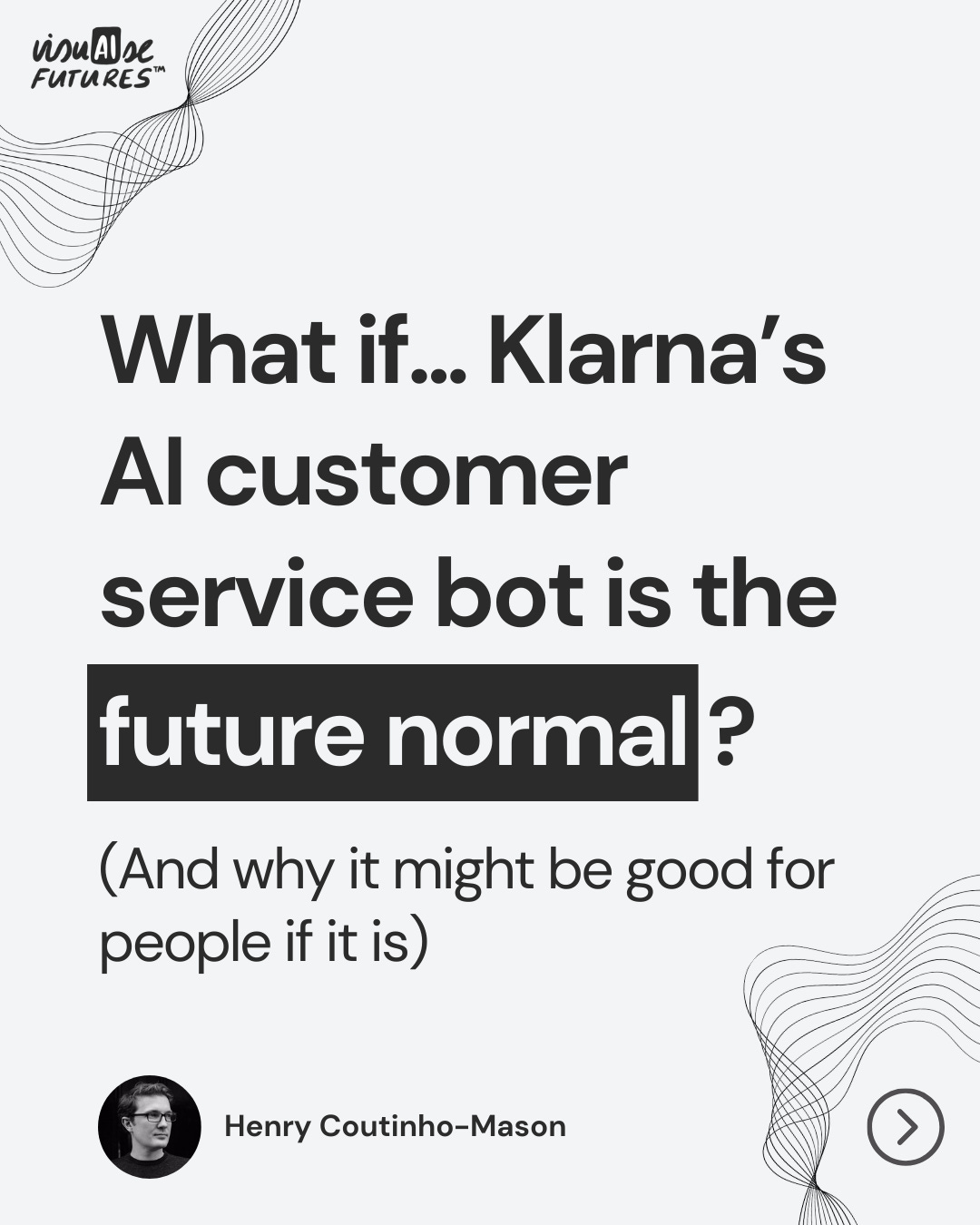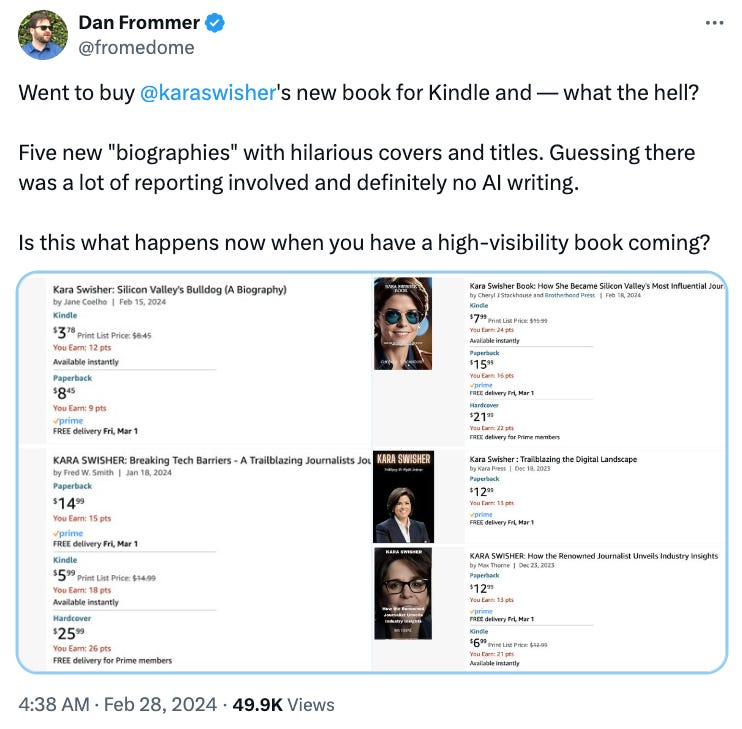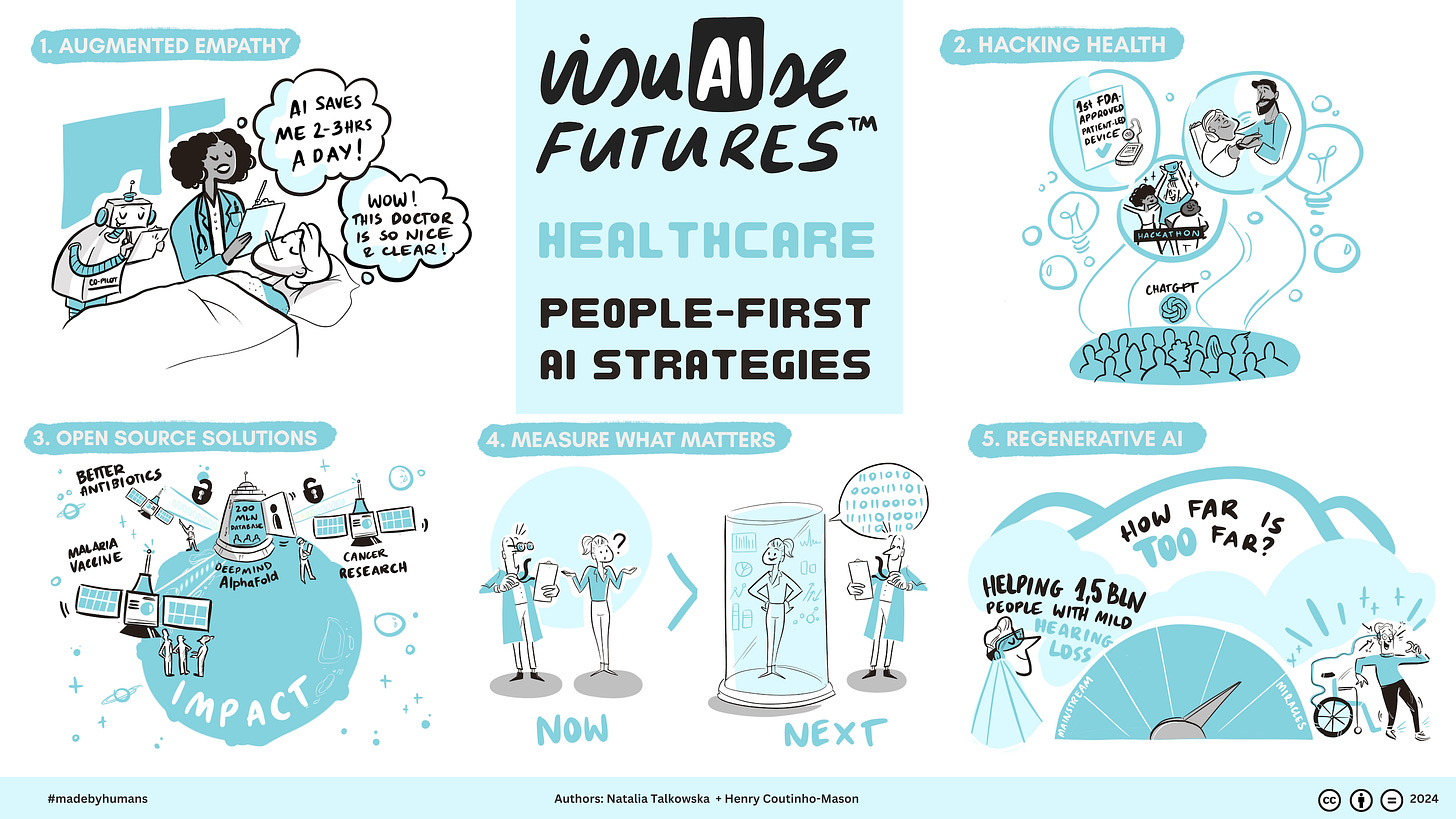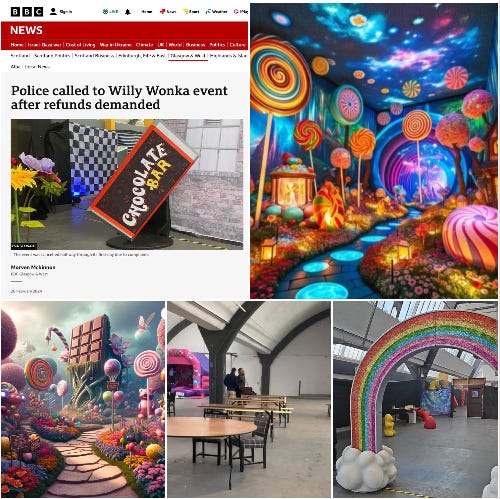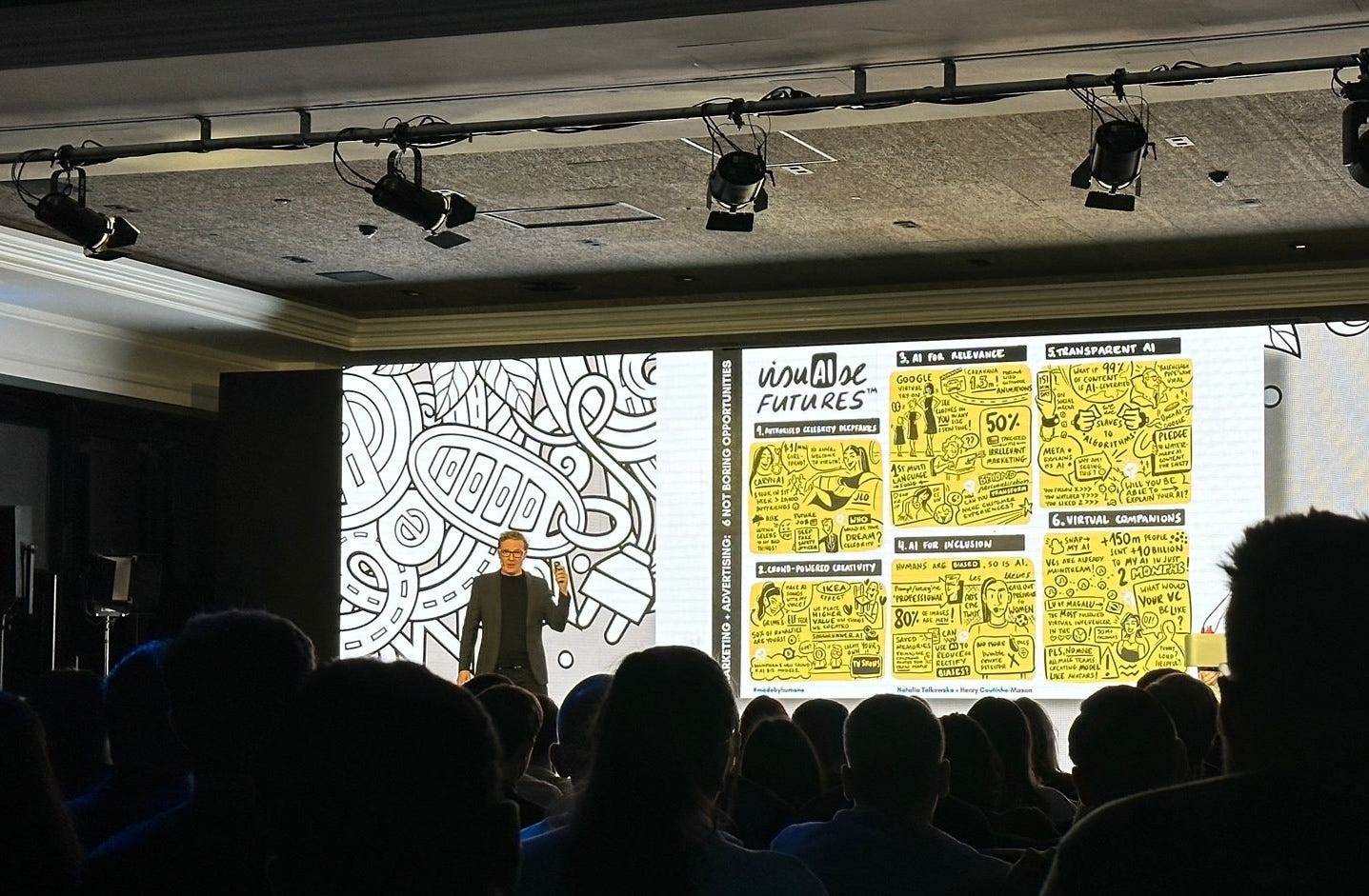Each week we go beyond the headlines and explore what AI will mean – for people, for businesses, the future of work, learning and culture, and more.
These updates will help inspire your team to see new opportunities to use AI. They’ll inspire you to ask the right questions. Most importantly, they’ll show you why putting people at the heart of your AI strategy will be the key to success.
Learn from:
Klarna, jobs and the human future of customer experiences
Instacart and the bizarre hell of a people-free AI world.
Willy Wonka and future in-demand skills.
Klarna, jobs and the human future of customer experiences
The Swedish fintech caused a stir when it announced that its AI-powered customer service bot was doing the job of 700 people, and would save the company $40 million a year.
Now, we should note a note of skepticism, given Klarna is rumoured to be gearing up for an IPO. But there's another reason why I'm more optimistic than most about this story.
First, we’ve seen technology ‘destroy’ jobs before. From farmers to bookkeepers, lots of jobs have been decimated by technology (see the graphs here). And we’re fine with it, because I suspect most people don't dream of spending their days handling completely mundane customer service queries.
It's time to make a case for automation. And how we might use it to free people to focus on higher value tasks.
There can only be one 'cheapest' option, and it's a tough race to win. For everyone else – competing on experience will be easier, more fun and more rewarding.
Check out:
IKEA – which retrained 8,500 customer service operators to offer remote interior design consultations, now that Billie, its AI chatbot handles half of its customer enquiries. It generated €1.3 billion of sales through this channel in 2022.
Amazon – AI Ready initiative aims to offer free AI training to 2 million people by 2025.
Ratio – this Shanghai coffee shop uses robot baristas, yet also employs human waiters to educate its customers and improve their experience.
In a world of autonomous AI agents and humanoid robots, every organisation should be looking closely and asking:
“Which tasks and experiences should use tech to automate?“
“Where can we use humans to enhance the experience?”
Hint: don’t just turn to automation to reduce your costs. Do it when convenience and availability are your customers’ primary needs. And the most interesting opportunities will be in unlocking completely new experiences – like IKEA’s remote design consultation channel.
Instacart and the bizarre hell of a people-free AI world.
Instacart is using AI to generate recipes and images. The only problem? Some of them are nonsensical, calling for “3 1/5 teaspoons of an ingredient” and even making up ingredients that don’t exist, “1 cup of Monito sauce”.
But Instacart isn’t the only business letting its customers drown in BS AI spam. I recently saw this on Twitter / X:
Clay Shirky famously said about social media – “it’s not information overload, it’s filter failure.”
We’re about to unleash AI agents that will generate infinite content. They’ll get better at avoiding obvious errors but, as Scott Belsky has written, taste is now a far scarcer resource rather than technical skill.
In the 2010s, algorithmic feeds became the dominant filters (and look at how that turned out). Now the handbrake on content creation is completely off, and we need new filters.
My hope is that we’ll turn back to people (I’m trying to avoid the dreaded influencer word here) or groups of humans to help us decide what’s relevant and interesting.
It won’t be people or AI. The boundaries will blur. I love the fun, and very on-topic example of this from Sandwiches of History. This TikTok sandwich ‘influencer’ (there’s truly there’s a niche for everything) has a great series where he asked ChatGPT to make him weird sandwich recipes, and then tests them. Thanks to his positive review, I’ve made the avocado, egg, mushroom and chocolate spread toastie – and it wasn’t bad!
Let’s use AI to push the boundaries of creativity in the future.
Let’s ensure humans decide whether what it suggests becomes the future normal.
VisuAIse Futures: Healthcare
Read our latest report, featuring 5 people-first AI strategies to transform the patient and clinician experience.
Willy Wonka and future in-demand skills
I've been very bullish on the power of AI to democratise innovation. The gap between creative impulse and manifesting it is collapsing, unlocking a world of crowd-powered creativity. Hurrah! \o/
But let's not pretend this doesn't create new challenges. It's easy to have ideas. It's now easier than ever to make these ideas look amazing. However, it's no easier to deliver them, as the organisers of this 'immersive Willy Wonka experience' found out.
The non-obvious insight here?
In the future normal creativity will be abundant. Execution will be the rarer – and therefore more valuable – skill.
About VisuAIse Futures
VisuAIse Futures is a graphic collaboration between 👩🎨 Natalia Talkowska and 🕵🏻♂️ Henry Coutinho-Mason – two curious humans with 20+ years collective experience of helping large organisations navigate change.
We love helping companies increase the reach and impact of their thinking, so if you want to bring us to run a workshop at your next AI event or meeting, and co-create a custom graphic for your organisation – then let’s chat!
“Inspiring, energetic, and entertaining. Henry's session for 2,000 senior executives from a Fortune 100 healthcare company received the highest rating from the attendees.” Brent Turner, SVP Head of Strategy, Cramer Events





